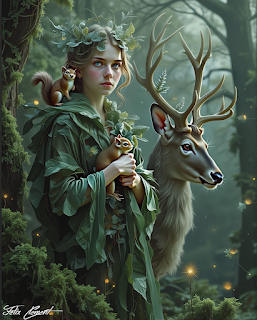Art, Dedication, and Integrity in the Age of AI
In today’s world, where technology offers rapid ways to create images, the true essence of art risks becoming overshadowed. For those of us who have dedicated years to developing our skills, artistry is not about quick outputs or popularity but about investing time and genuine effort into mastering each element of our work. This difference in approach marks a vital line between craftsmanship and convenience.
A Lifelong Dedication to Mastering Art
As an artist, my journey began over 20 years ago, learning to portray the human form in all its complexity. Drawing hands alone, a subject notoriously challenging for artists, took me six months to understand. Hands express so much emotion and movement, and getting this right required studying anatomy, shading, and subtle gestures. From dynamic poses and facial expressions to the intricate folds of fabric in motion, each of these elements took dedicated practice and close observation of real-life references.
Blending these elements in a way that creates a unique visual representation demands years of training. These skills go far beyond what any program or algorithm can replicate. While AI can generate impressive images with a simple prompt, it lacks the human capacity to draw connections from life experience, understand cultural context, or innovate in a way that reflects an artist’s personal journey.
Why Authenticity Matters
AI’s role in art creation raises ethical questions because AI image generators depend heavily on learning from human-made images. Without public knowledge, these systems often use artworks and photographs from artists and photographers who’ve invested years into honing their craft, which, in turn, becomes the uncredited foundation for AI outputs. For someone simply typing a prompt, the history, skill, and intention behind those original works are invisible.
When we use AI as a tool within a human-driven creative process, it can enhance our work without replacing it. I believe AI is best used for refining specific details rather than creating an entire piece on its own. This way, my art remains genuinely mine, reflecting my skill, intention, and years of dedication. However, when AI alone becomes the artist, the process risks becoming hollow, no longer an authentic act of creation but instead a mimicry of patterns learned from human work.
Crafting Art with Purpose, Not for Popularity
In some online spaces, quantity often takes precedence over quality, with members posting hundreds of images to boost engagement and rank as “top contributors.” But artistry isn’t about numbers; it’s about substance. Posting countless images, generated quickly and without depth, may create a lot of content but rarely leads to a meaningful artistic journey.
My approach is different. I focus on producing fewer pieces, each with intent, craftsmanship, and a deep connection to the artistic tradition. I believe in honouring the hard work and skills required to create each piece rather than producing for the sake of visibility or social media metrics. In a world where AI allows for mass generation, this commitment to quality and purpose sets true art apart from generated images.
Upholding Respect for the Craft
Real art has never been about shortcuts. It’s a journey that involves patience, practice, and a willingness to learn, not only from one’s own efforts but also from the history and contributions of other artists. Art history carries countless lessons from those who came before us, showing that true creativity is more than imitation; it’s a personal exploration and expression of life itself. Unfortunately, this respect for the craft and history of art seems to be waning among some AI users who prioritize convenience over dedication, often dismissing the value of studying traditional techniques.
As artists, we have the choice to maintain this respect, showing that art has as much to do with the process as with the final result. For me, each piece is an investment of skill and thought, and this commitment to quality over quantity not only makes my work feel more meaningful but also helps preserve the essence of what art truly is.
In Conclusion
Art is not just about creating something visually appealing; it’s about expressing emotions, ideas, and perspectives that resonate with others. All that looks good is not necessarily art, and all that is art doesn’t have to conform to conventional beauty. Art has the power to stir emotions, provoke thought, and inspire change.
When used ethically, AI can indeed be a valuable tool, allowing artists to experiment and expand their capabilities. However, it should never replace the dedication and heart that only human artists can bring. In the end, it’s our unique vision, hard-won skills, and respect for the craft that define us as artists, not the technology we use.





.png)





.webp)
.webp)
.webp)
.webp)



.webp)






.png)
.png)







%20copy.png)





